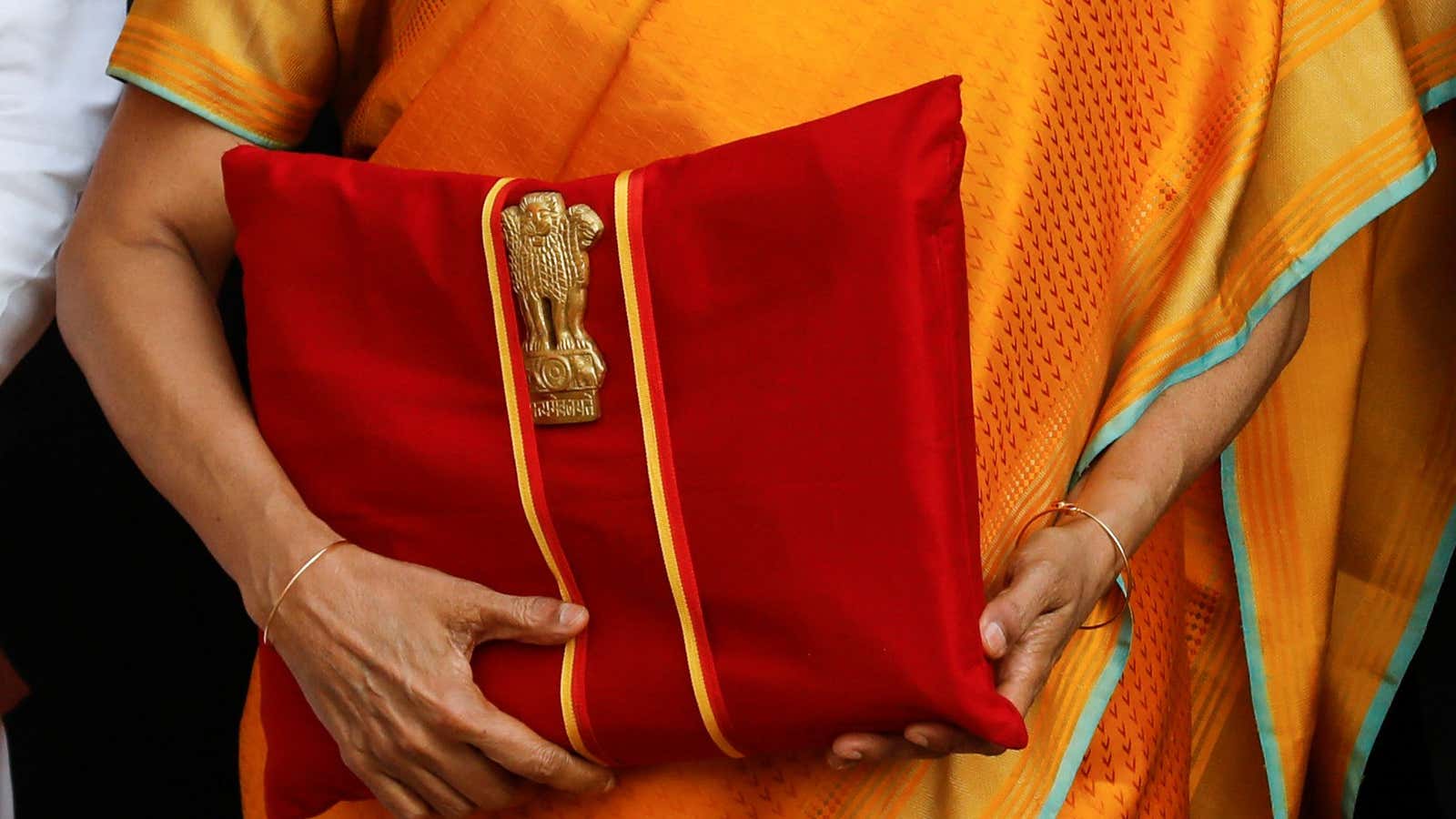While finance minister Nirmala Sitharaman navigates the obstacle course between fiscal deficit and economic stimulus, her announcements for India’s healthcare sector will be closely watched.
In the grips of that pandemic that has infected more than 10 million Indians, the central government is expected to increase its spending on healthcare to ramp up infrastructure. “Health and investment in health is going to be critical, not only to keep our lives safer but also to make our health-related expenditure more predictable, for people will not be spending for health out of their pocket,” Sitharaman had said in November, during a conference hosted by the Confederation of Indian Industry, a non-governmental trade advocacy group.
During the same event, Vinod Paul, a member of the government’s think tank NITI Ayog, had said that the government should be looking at spending 8% of its annual budget on healthcare in 2021-22. This would mean a stark departure from the norm. In the 2020 budget, for instance, government spending on healthcare was just about 2% of all its total estimated expenditure.
Over the past decade or so, India has consistently spent just over 1% of its GDP on healthcare.
Healthcare spending around the world
India’s spending on healthcare is among the lowest in the world. The US, for instance, spends over 17% of its GDP on health. But even in lower-income countries, and those in the Indian subcontinent, such budget allocation is higher than India’s.
While the government’s data are not available for the past two years, it’s spending was at par with past years’ trends. A consistently low budget allocation was apparent from the stress of India’s healthcare systems when the pandemic hit India in March 2020.
This is why, experts believe that the upcoming budget for fiscal year 2021-22, to be announced on Feb. 1, should allocate significantly greater funds towards improving medical infrastructure in the country.
“The budget should recognise the immediate needs of the Covid-19 pandemic and the vaccine rollout,” says Anant Bhan, bioethics and global health policy researcher, and adjunct visiting professor at Yenepoya University in Mangaluru. “But we must also focus on the larger picture, such as increasing human resources and overall infrastructure. The pandemic made the deficiencies in our healthcare system obvious,” he says.
The Indian government, in its National Health Policy of 2017, had set itself a target of increasing healthcare spending to 2.5% of the GDP by 2025. But in the past four years since the policy was put in place, there has been little or no improvement in this direction.
“We might not be able to achieve all our goals in this one budget,” Bhan says. “But we need to start in that direction. We need to commit to invest in healthcare over the next few years and make it a priority.”
